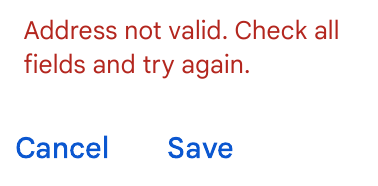
Forms, particularly computerized forms, are a special kind of arrogance.
I understand the purpose of the form: to organize information and make sure that it’s all there. It has been a very long time, though, since I saw a form that wasn’t heavily slanted toward the convenience of the form’s creator. A common example is job applications. They request a résumé or curriculum vitae, and proceed to force the applicant to copy almost all the exact same information onto the form.
I recently went to a doctor visit, and had to write my name and date of birth seven different times on all the forms.
I ran into yet another case of an online form not accepting my perfectly-valid shipping address and offering absolutely no workaround: no customer service email or phone number. “Our form is broken, and we so don’t care that we’re not even going to give you a way to tell us it’s broken, let alone give you the opportunity to work around our broken web site.” So they lost a sale, and likely many others, and they don’t even know.

When I was practicing medicine, I ran into so many forms (mostly from insurance companies) that absolutely required that you distort the truth in order to complete them. I put a disclaimer page on the web with a very short URL that I could usually squeeze into one or another text field on the form, explaining that my responses were colored by the rigidity of their forms and their lack of alternatives and disclaiming responsibility for those responses.
I worked for a county-funded program that had an endless repertoire of forms the doctors had to fill out: 23 pages just to admit a patient into the program. When they went online, their system was so incompetently designed that you couldn’t even tab through fields: you had to manually scroll then mouse-click each field (hundreds!) individually. They wouldn’t accept the information any other way. They had an ulterior motive, of course. By forcing their (very expensive) physicians to do all the (usually cheaper) clerical work, they could move those expenses out of the “administrative overhead” column and call them part of the cost of actual health care. Even so, the county’s administrative overhead was a whopping 98%, most of it seemingly spent on incompetent form design.
Every form, paper or electronic, should have a generous free-form text field for those situations — and they always exist — that are beyond the imagination of the form designer. Otherwise, the purveyor of the form is arrogant, or manipulative, or both.
—2p